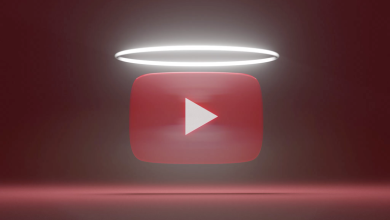Mastering Content Planning: How to Build a Consistent Blogging Schedule
Create a Blogging Routine That Engages Readers, Boosts SEO, and Drives Long-Term Success

Starting a blog can be exciting and empowering. But once the initial thrill fades, many bloggers find it challenging to keep up with posting regularly. That’s where content planning comes in. A well-thought-out content plan and consistent blogging schedule can make the difference between a blog that thrives and one that fizzles out.
In this guide, we’ll dive into why content planning is crucial, how to create a blogging schedule that works, and the benefits of staying consistent. By the end, you’ll have the tools you need to take your blog to the next level!
Why Content Planning Matters
Imagine you’re driving to an unfamiliar destination without a map. You may eventually get there, but you’ll likely get lost or face delays. The same idea applies to blogging without a plan. Content planning provides direction, keeping your blog organized, focused, and consistent.
Some key reasons content planning is essential:
- Maintains Consistency
When you plan your content, you establish a regular posting rhythm. This consistency helps build trust with your audience. Readers are more likely to return to a blog that updates regularly. - Reduces Writer’s Block
Ever sat down to write only to find your mind blank? With a content plan in place, you’ll already know your topics in advance, saving you from that “What should I write about?” dilemma. - Supports SEO
Search engines reward consistent, high-quality content. By planning out topics, you can focus on keywords and SEO strategies that help your blog rank higher in search results. - Improves Audience Engagement
Knowing your audience and planning content accordingly allows you to deliver content they actually want to read. When you publish relevant, timely posts, your readers are more likely to stay engaged.
Steps to Build an Effective Content Plan
Building a content plan might sound complicated, but with a few simple steps, you can create a system that keeps your blog flowing with fresh ideas.
Step 1: Identify Your Blog’s Purpose and Audience
First things first, get clear on why you’re blogging and who you’re blogging for. If you know your target audience, you can plan content that meets their interests and needs. Consider their pain points, the questions they’re asking, and the type of information they find valuable.
Ask yourself:
- What do my readers want to learn or gain from my blog?
- What topics will resonate most with my audience?
- How can I add value and stand out from similar blogs?

Step 2: Brainstorm Content Ideas
Once you’ve pinpointed your audience’s interests, brainstorm ideas that align with those. Write down all the topics you think might interest your readers. No need to judge or organize them just yet; simply get everything down on paper.
Use these techniques for brainstorming:
- Keyword Research: Tools like Google’s Keyword Planner or Ubersuggest can help you find topics people are searching for.
- Competitor Research: Check out blogs similar to yours for ideas, but remember to put your own spin on them.
- Ask Your Audience: If you have a social media following, ask them what they’d like to see on your blog.
Step 3: Organize and Prioritize Your Topics
With your list of ideas in hand, it’s time to prioritize. Identify which topics are the most timely, relevant, and likely to generate interest.
- Group Related Topics: If certain ideas are related, group them together as a series or theme.
- Rank by Importance: Decide which topics are most essential or likely to attract readers.
- Mix It Up: Plan a variety of content types, such as tutorials, opinion pieces, listicles, and personal stories, to keep your audience engaged.
Step 4: Choose a Posting Frequency
The next step is to determine how often you’ll post. This could be once a week, twice a month, or even daily. Consider what’s realistic for your schedule. Consistency is key, so it’s better to commit to a schedule you can maintain than to burn out after a few weeks.
Tips for choosing your frequency:
- Start Small: If you’re unsure, start with one post a week. You can always increase frequency later.
- Analyze Competitors: See how often other bloggers in your niche post and use that as a benchmark.
- Balance Quality and Quantity: Posting too frequently can compromise quality, so prioritize creating valuable content.
Step 5: Create a Content Calendar
Now it’s time to put your plan into action with a content calendar. This can be as simple as a spreadsheet or as advanced as project management tools like Trello or Asana. Your content calendar should include:
- Title: The headline or working title for each post.
- Publication Date: The date you intend to publish.
- Keywords: Any relevant keywords for SEO.
- Content Type: Whether it’s a tutorial, opinion piece, etc.
- Status: Track whether the post is in draft, editing, or scheduled stage.
This calendar will serve as your roadmap, helping you stay on track and see upcoming deadlines at a glance.
Step 6: Plan for Repurposing Content
Repurposing content allows you to get more mileage out of your posts. For example, you can turn a blog post into an infographic, a social media post, or even a video. This not only saves time but also helps reach a broader audience.
Some repurposing ideas:
- Social Media Snippets: Share key takeaways or quotes from your blog posts on social media.
- Newsletters: Feature blog posts in your newsletter to keep subscribers engaged.
- Guest Posts: Rewrite and expand a post as a guest article on another site, linking back to your blog.
The Benefits of a Consistent Blogging Schedule
Now that you have your content plan and calendar set, let’s talk about why sticking to a consistent schedule is so valuable.
- Boosts SEO Rankings
Google loves fresh content. By consistently posting high-quality articles, you signal to search engines that your site is active, improving your chances of ranking higher in search results. - Builds Trust with Readers
Regular updates show readers you’re committed, making them more likely to trust and follow your blog. When readers know they can expect valuable content, they’re more inclined to visit frequently. - Increases Engagement and Shares
Consistency fosters engagement. When your readers regularly see content they enjoy, they’re more likely to share it with others, growing your blog’s reach. - Improves Time Management
When you know what content is coming up, you can plan your time more efficiently, allowing you to create better, more polished posts without feeling rushed. - Attracts Potential Sponsors and Collaborators
Brands and collaborators are more likely to work with bloggers who show commitment and consistency. A blog with a steady flow of content appears professional and reliable.
Staying Consistent: Tips for Long-Term Success
Even with the best intentions, life happens. Here are some tips to help you stay consistent with your blogging schedule:
- Batch Content: Set aside time to write multiple posts at once. This creates a buffer, so you have content ready even during busy times.
- Automate Publishing: Use tools to schedule posts in advance, ensuring they go live on time even if you’re unavailable.
- Keep Ideas Flowing: Regularly update your content calendar with new ideas so you always have topics to work on.
- Reevaluate Periodically: Every few months, revisit your content plan to see what’s working and what isn’t. Adjust as necessary to stay aligned with your goals.
Conclusion
Building a consistent blogging schedule through effective content planning isn’t just about posting regularly; it’s about creating value, building trust, and attracting readers over time. With a clear content plan and a schedule you can stick to, your blog will have a solid foundation to grow and succeed.
So grab your calendar, brainstorm those ideas, and start planning. The journey of consistent blogging awaits—happy writing!



